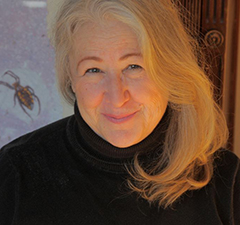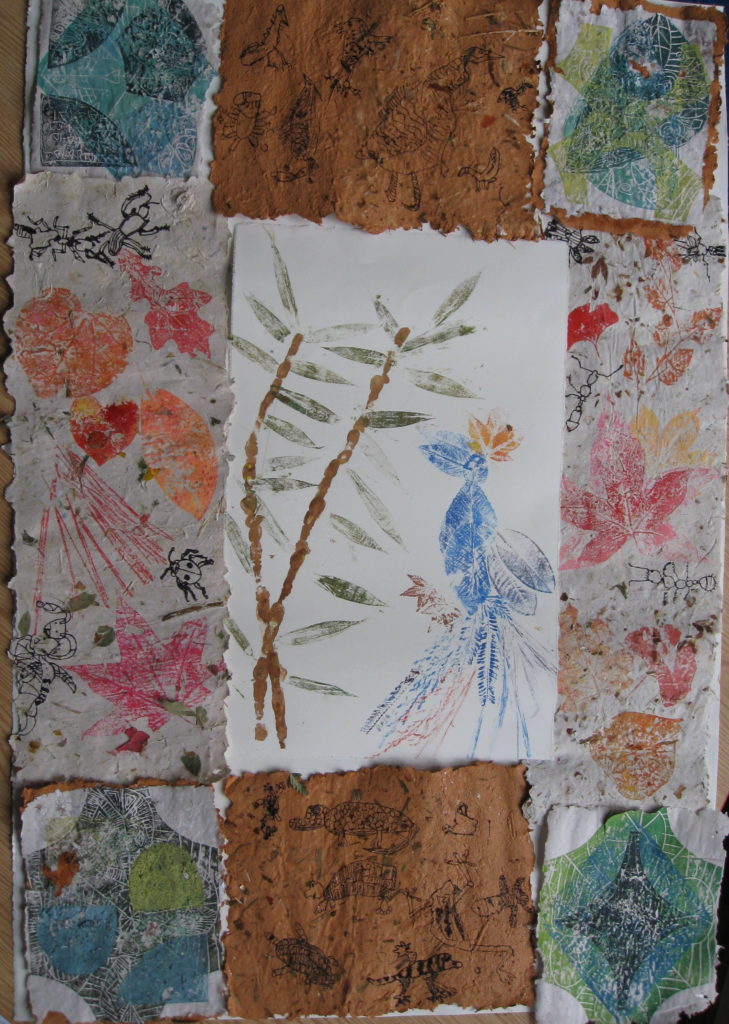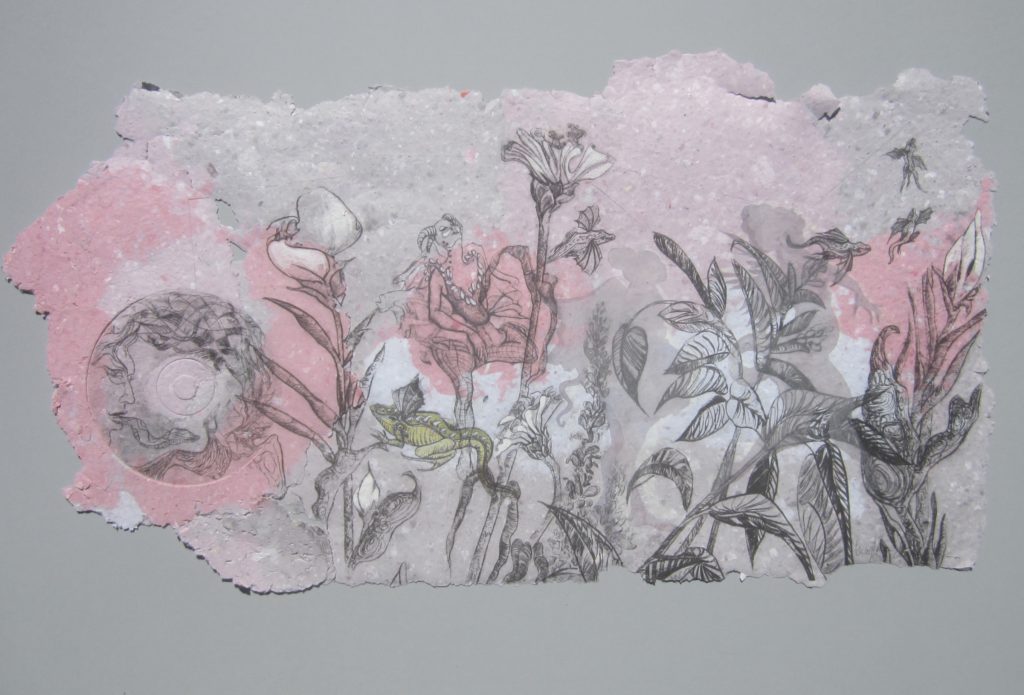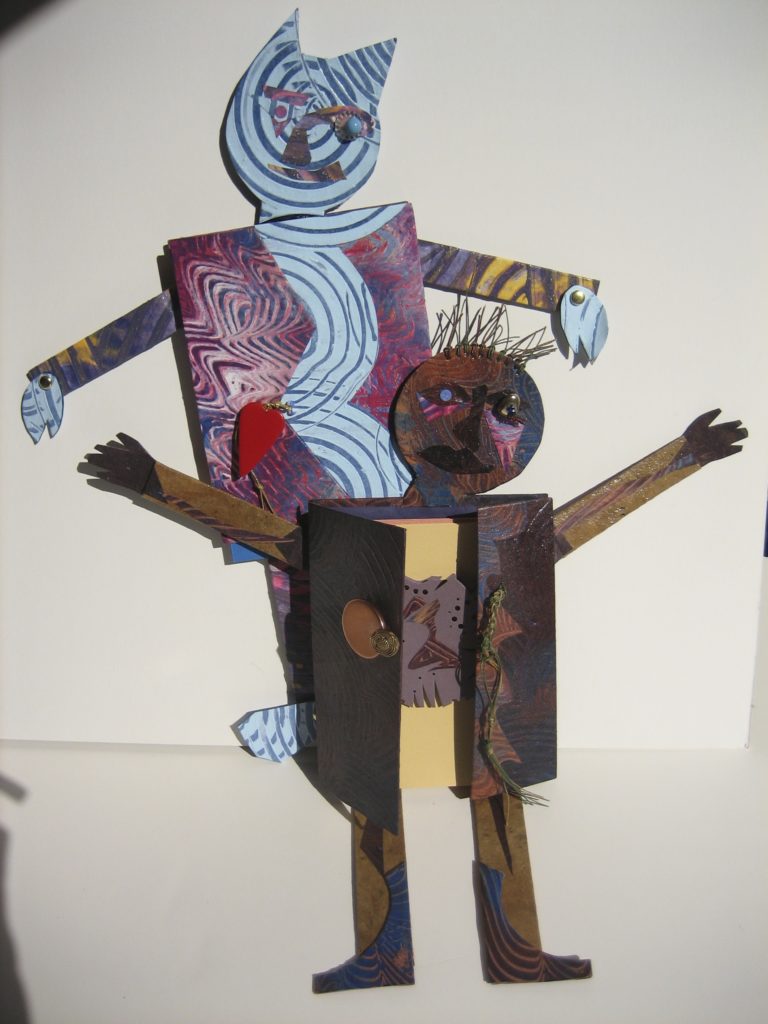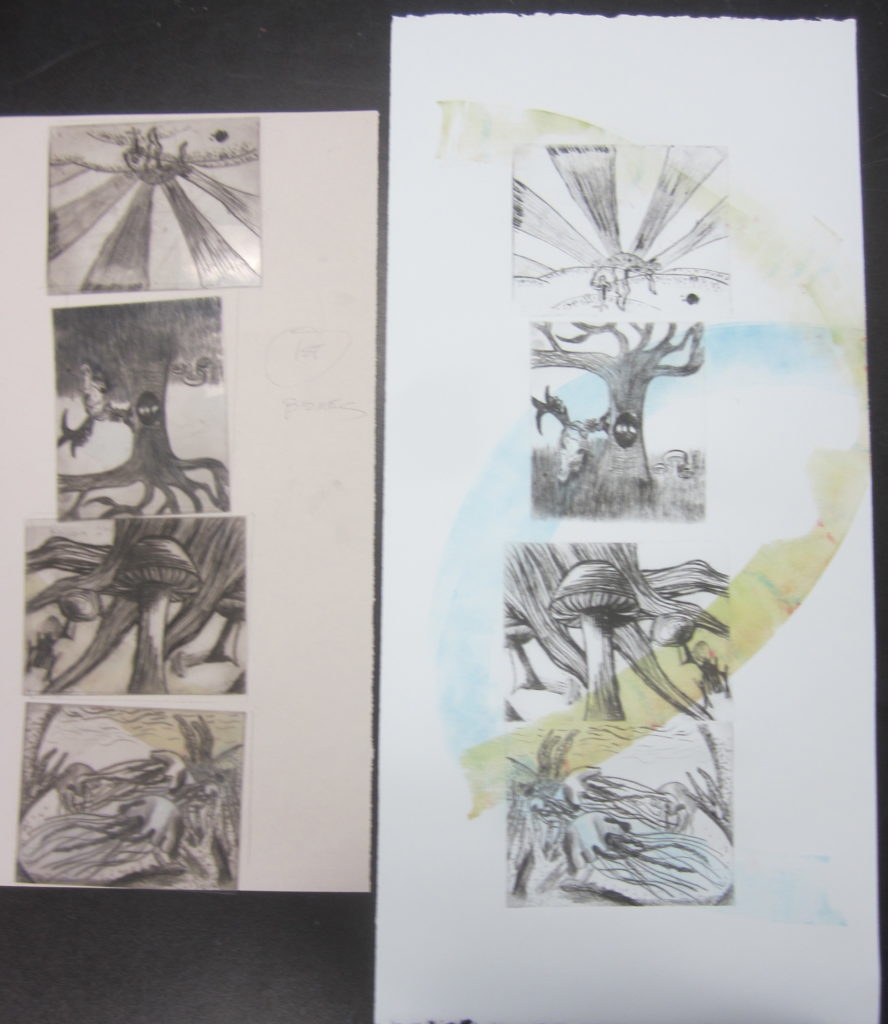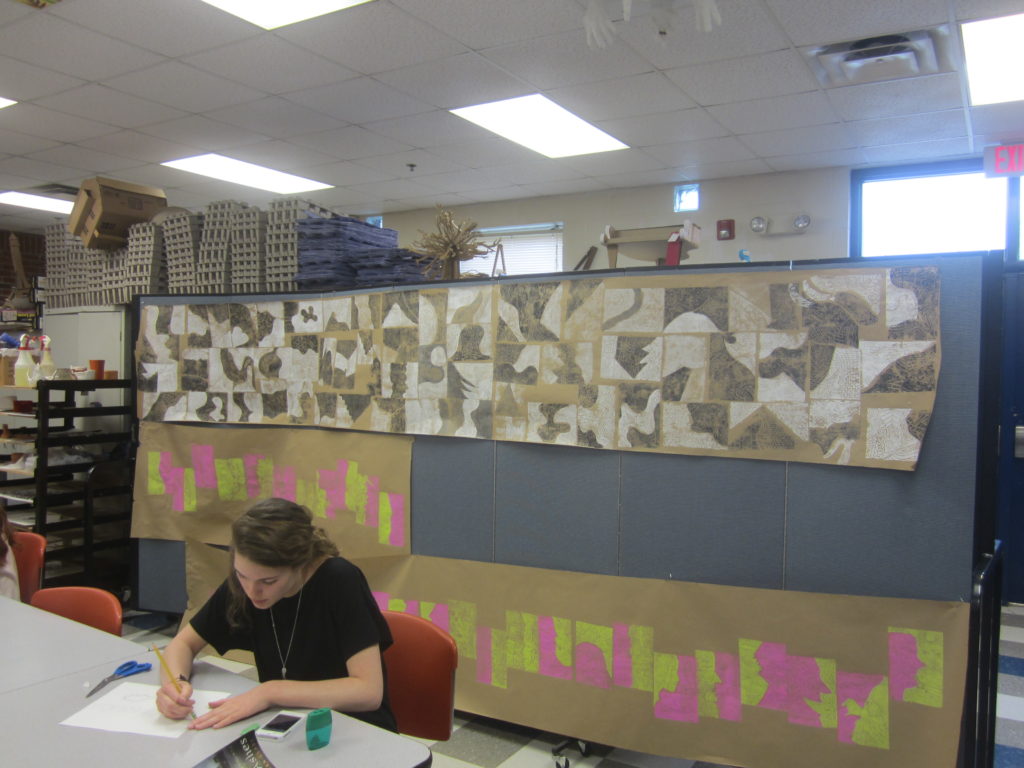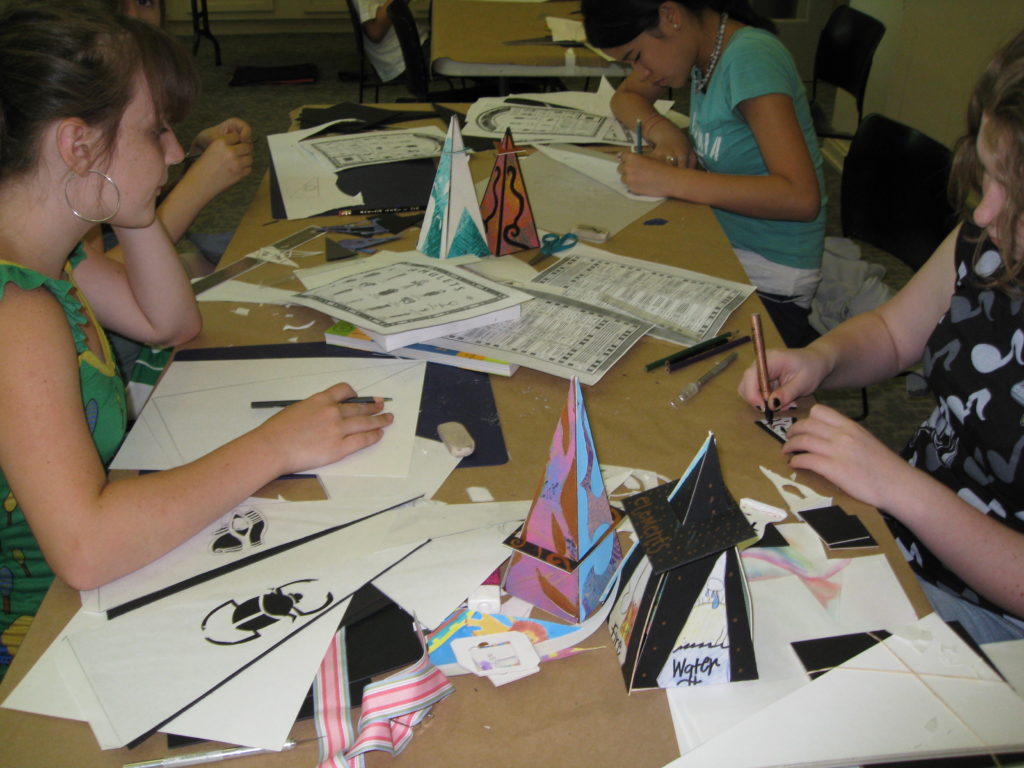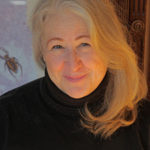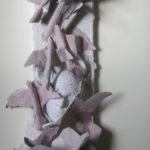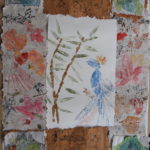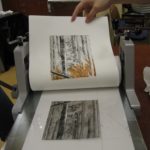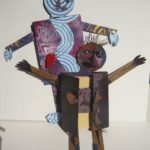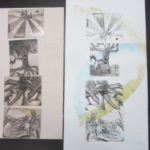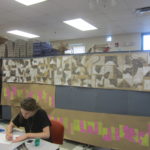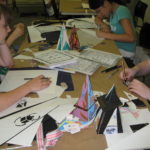Pam Beagle-Daresta
Currently certified as a teaching artist with the South Carolina and Mississippi Arts Commissions, as well as GCA, Pam Beagle-Daresta creates engaging workshops and residency programs in printmaking, papermaking, and the book arts. Her often STEAM-related projects incorporate observation concept drawing with engineering production processes. Because nature and cultural histories inspire her own art making, her teaching offers an intrinsic alignment with arts integration. Pam’s innovative process-focused programs feature learning foundation skills, support inquiry discovery learning, and promote creative risk-taking resulting in original student work. Her residencies deepen individual student learning and offer collaborative production of compilation learning projects culminating in the production of a public work of art for host institutions. Her professional development work focuses on arts-integration tools and strategies for success. Pam regularly leads in-depth professional development programs for school systems, museums, and arts councils. She recently served on the Governor’s Arts Learning Task Force.
Arts Disciplines: Visual Art
Core Content Curriculum Areas: Visual Art
Specialized Content Areas: Arts Integration, STEAM, World Cultures, Mindfulness Strategies, Classroom Management Strategies
Grade Levels: Pre-K, K-2, 3-5, 6-8, 9-12
Special Populations: ELL (English Language Learners), At-Risk Students, Autism Spectrum Disorder (ASD) Students, Exceptional Learners (students with disabilities as well as those who are gifted and talented
Pre-Service Learning and Professional Development: Professional Development for K-12 Teachers, Professional Development for Teaching Artists
Geographic Availability: Metro Atlanta, North Georgia, Middle Georgia, South Georgia
Program Types:
School-based Classroom Workshop(s), School-based Residency Program
Community-based Workshop(s), Community-based Residency Program, Community-based Summer Program
Program Fees:
- Workshops: Artist fee minimum per day for 3 classes (25 to 30 students per class) is $300; extra classes are $75 each; mileage and lodging will be added, if applicable (over 60 mile round trip); materials are determined by the project
- Residencies: Minimum 1 week, 4 classes per day (25 to 30 students per class) is $1,500; extra classes each day are $75 per class; mileage and lodging will be added, if applicable (over 60 mile round trip); materials are determined by the project
Artistic Profile:
My artistic journeys and life journeys have always been entwined, the paths of art making, teaching, and residency projects informing and enriching each other.
My childhood was art enriched with a dancer mom, photographer uncle, and musician grandparents. These early influences informed me with an ability to feel marks as dance and to draw with the rhythms, patterns, and textures of music.
My art training foundation skills from Ringling College of Art and Design have served me well as my journeys have expanded those skills. Over 30 years of residency teaching, creating public murals, and installations became part of new journey paths, with a side effect of becoming chemically sensitive from printmaking and the journey to find new nontoxic ways to work.
Printmaking lead me to papermaking, papermaking to book arts, to sculptural cast paper, marrying these processes, providing endless possibilities allowing me to artistically soar. It is meditative observant drawing that keeps me centered as I find my way through the work.
Nature, relationships, parenting, and life informs my mark making. My practice of integrated and collaborative making and teaching requires altering strategies always mindful to be open to the “new and unexpected.”
I embrace the ambiguities and the angst of creative process always looking forward to a new path that challenges me to take artistic risks and the unexpected results rendered.
I continue to participate in juried shows, group exhibits, and numerous solo exhibitions. My work is in private and institutional collections.
Teaching Experience:
I am a visual art teaching artist offering programs based in printmaking, papermaking, and book arts that incorporate observation concept drawing with the engineering and production processes of the art form.
I have always approached art education with curriculum content integrated points of entry. Program offerings provide introduction experiences and products. Residency programming renders in-depth individual experiences and collaborative production of compilation paper and print sculptural works, murals, or collaborative book forms for the school community.
I have developed and implemented curriculum-integrated art education programs for museums, arts centers, and K-12 schools for over 30 years. Currently I am on the rosters of South Carolina Arts Commission, Georgia Council for the Arts, and Mississippi Arts Commission. I recently served on the Governor’s Arts Learning Task Force.
A Georgia History mural was created by 200 middle schoolers for Senator Johnny Isakson’s Washington office, integrated with 8th grade Georgia Studies. A recent Vibrant Communities Residency with high school students integrated language arts and science curriculum concepts (poetry, mythology, and biology) in nontoxic intaglio printmaking. Student’s created original individual and collaborative prints.
I have presented professional development arts integration programs for Missouri, North Carolina, South Carolina, Georgia, and Mississippi schools, educational conferences, and museums.
My teaching credentials include: Discipline-Based Art Education Getty Southeast Center for Education in the Arts, Art Therapy Georgia Council on Child Abuse, “Talents Unlimited” gifted certification, and Character Through the Arts Bernstein Artful Learning. I continue to share my passion for mark making, teaching adult art classes at the Campbell Folk Arts School in North Carolina.
Sample Programs:
- Printmaking Master Prints
- Taking one’s drawing and creating an original print from it is a magical masterful experience. The print subject can be any topic connecting with curriculum or anything you can imagine. Puzzle Prints inspired by the sculpture of Master Artist Frank Stella begin with student’s drawing geometric shapes appropriate to grade level, engraving the drawn image into an inviro printing plate, inking and printing the plate, We will further develop our plate with imaginative /symbolic patterns and over print our original print with our reworked plate inked in a different color, in a multiple session workshop. A printmaker residency further extends the printing experience with shared collaboratively printing to create large format prints possibly on foam core. Cutting the plates into shapes and further developing overprinting processes, in a collaborative effort. The dry collaborative prints can be cut into pre-identified shapes and all of the print shapes from the participating classes will be combined to create a collaborative sculpture. The strategies for a collaborative relief sculpture will be determined by the sites teachers to best suit the students working habits and topic.
- Safe non-toxic techniques accommodate any age or skill level. Printmaking combines perfectly with papermaking, and book art, to create collaborative print quilts for a residency project, and everyone has his or her original prints to keep.
- Cost Workshop: minimum 3 classes per day (25 t0 30 per class) $300 plus travel and housing if applicable
- Extra classes per day: $75 each
- Materials: determined by project
- Facility Requirements: art room preferred or a classroom with running water large tables and storage space (drying rack preferred)
- Cost Residency: minimum 1 week 4 sessions per day $1500 plus materials determined by the project, travel, and housing if applicable
- Participants Audience:
- K-2 Fruit Veggie Portrait Prints
- 3-8th Creating Creature relief prints
- 6 -12th Intaglio Print Residency
- Adult printmaking classes process request of site
- (Printmaking image topic can be developed to connect with desired curriculum subject.)
- (The artist has a small press to use on site.)
- Primary Printmaking
- Grade levels: K, 1, 2 / Max. Participants: 25 per class / 45 min. per class.
- Facility requirements: classroom space with large tables, chairs, running water, paper towels, trash can, and drying space for prints (drying rack preferred).
- Project Point of Entry: Giuseppe Arcimboldo, Milan, 1527 to 1593.
- Goal: to create a self-portrait print using fruits and vegetables in the tradition of found object printing.
- Objective: to introduce printmaking fundamentals, portrait proportions, and spatial concepts while affirming, classifying, and identifying fruits and vegetables.
- Project Description: using reproductions of Arcimboldo’s seasons portraits, the artist will ask students to identify and classify what they see in the painting. We will discuss the visual pun and then the artist will demonstrate how to ink and print the fruits and vegetables. The demonstration focus will be on creating an image of a face through learning placement and proportional basics of facial features. The students will then print their own portraits. The artist will ask the pre and post questions before and after the activity; teachers may record responses in writing or on video.
- Pre and Post Questions: What is a portrait? What is a print? How do you make a print?
- Standards:
- National Standards, Visual Arts; K-4 Content standard: 1: Understanding and applying media, techniques and processes.
- Content Standard: 3: Choosing and evaluating a range of subject matter, symbols and ideas
- Content Standard: 5: Reflecting upon and assessing the characteristics and merits of their work and the work of others
- Science k; SKCS1. Students will be aware of the importance of curiosity, honesty, openness, and skepticism in science and will exhibit these traits in their own efforts to understand how the world works.
- Raise questions about the world around you and be willing to seek answers to some of the questions by making careful observations (5 senses0 and trying things out.
- SKCS5. Students will communicate scientific ideas and activities clearly.
- Describe and compare things in terms of numbers, shape, texture, size, weight, color, and motion.
- Begin to draw pictures that portray features of the things being described.
- SKP1. Students will describe objects in terms of the material they are made of and their physical properties.
- Use senses to classify common materials, such as buttons or swatches of cloth, according to their physical attributes (color, size, shape, weight, texture, buoyancy, flexibility).
- Mathematics K. MKM1. Students will group objects according to common properties such as longer/ shorter, more/or less, taller/shorter, and heavier/lighter.
- Compare and order objects on the basis of length.
- Compare and order objects on the basis of height.
- Materials: Site supplies printing stock: paper (colored construction) or t- shirts. Artist will provide inking plates, brayers, inks (non toxic water based) fruits and vegetables, and art reproductions.
- Creating Whimsical and Unique Books
- Theme: Grade appropriate chosen core curriculum content topic.
- Participants make character or setting books shaped like a person/creature, a forest, community buildings, or an imaginary place. The content can connect with numerous educational standards especially well with elementary language arts curriculum in creating / describing characters / settings / events, and retelling stories. Students will learn a traditional book form with artistic twists. These books can be constructed in one session with the content being produced with the classroom teacher after the workshop. Residency projects offer making tradition decorative papers (pastepaper or marbling) to be used in the participant’s book project a variety of binding techniques, signature folding and stitching techniques as well as 3dimensional book forms. Books are formatted with grade level appropriate skills and practices.
- Workshop Cost: Minimum 3 classes per day (25 to 30 students per class) is $300, plus travel and housing, if applicable; additional classes in the same day are $75 each
- Residency Cost: Minimum 1 week, 4 classes per day, is $1,500, plus materials determined by the project, and travel and housing, if applicable. (Residency programs usually target a grade level.) Extra classes per day are $75 each.
- Materials: For 1 session, workshop materials are included. For multiple-session workshop/residency projects, material cost is determined by the project.
- Participant Audience: K to adult
- Facility Requirements: Art classroom preferred; space or classroom with running water, large tables, and storage space (drying rack preferred)
- Paper to Print Creature Makers
- Residency offering begin with students will be making paper for their prints from repurposed papers , this includes making the paper pulp, and learning sheet forming techniques.
- While waiting for our paper to dry we will begin the process of intaglio drypoint printmaking that will grace our handmade paper. Students will engrave a print plate ,proof print / edit the plate, pull prints, and add monoprinting techniques that will further develop ones print image.
- The student created concept print image can connect with any core curriculum a favorite is creating creatures that combine various animal classifications. Students will also justify the creature by identifying its habitat, food sources, and predators adding these elements to their plate image with monoprinting techniques..
- Martin Schongauer’s prints of fantastic creatures serve as point of entry reference; students will research the animals they choose to combine in creating their creature drawings for their print plate. The students’could work in collaborative groups to plan their individual prints to create collaborative print scenarios of adaptation, extinction ,food chains/webs, or biomes.
- Cost: Residency minimum 1 week, 4 classes per day (1 hour or longer per class) $1500 plus materials determined by program, travel and housing if applicable. Extra classes per day $75 each
- Materials: Printing paper, printing plates, nontoxic inks, drawing paper, inking supplies $2.00 to $5.00 per student Artist provides printing press and tools
- Participants Audience: Grade levels 5-12 (25 to 30 participants per class.
- Facility Requirements: Art classroom best space or classroom with running water large tables storage apace (drying rack preferred)
Program Photos:
[tm-pg-gallery id=”2231″][/tm-pg-gallery]
- Listing ID: 6036
